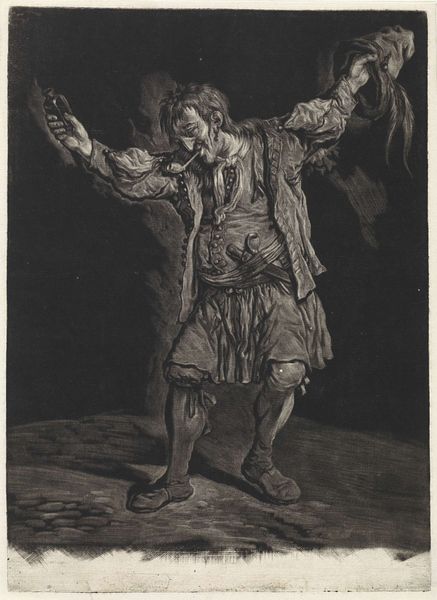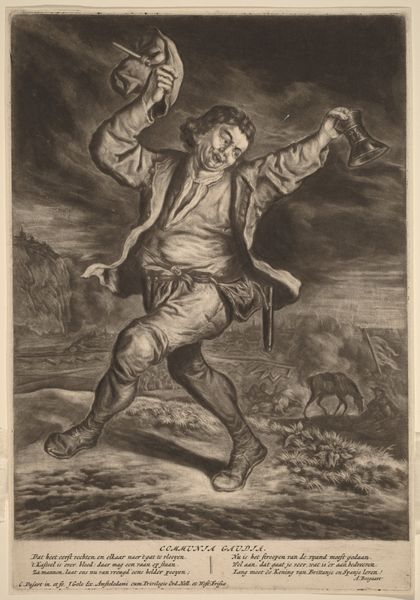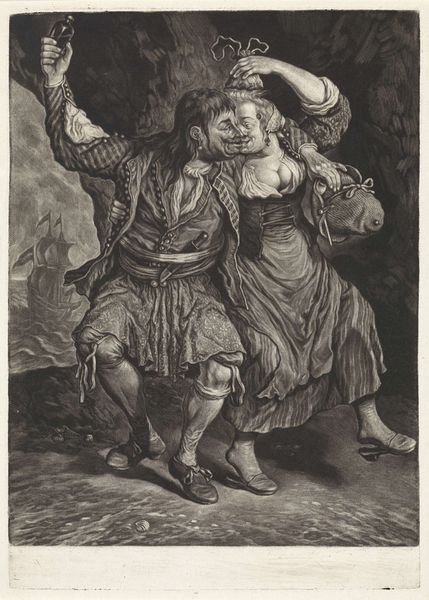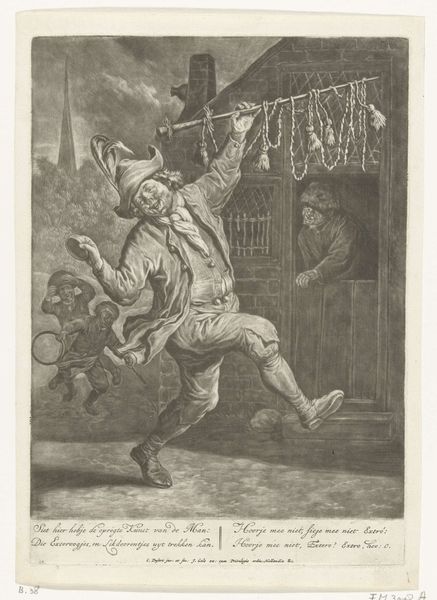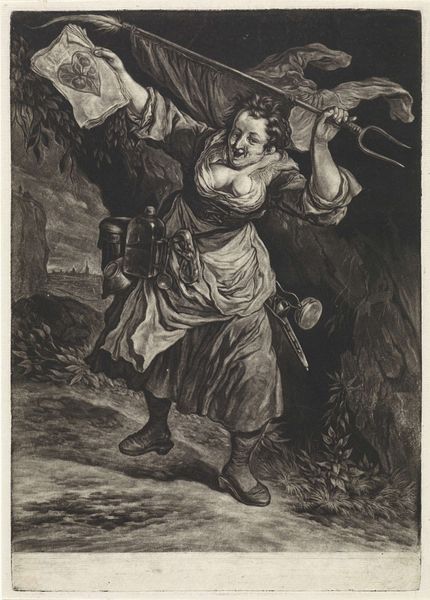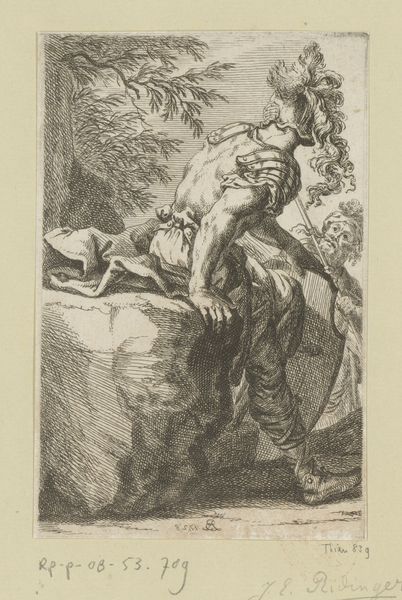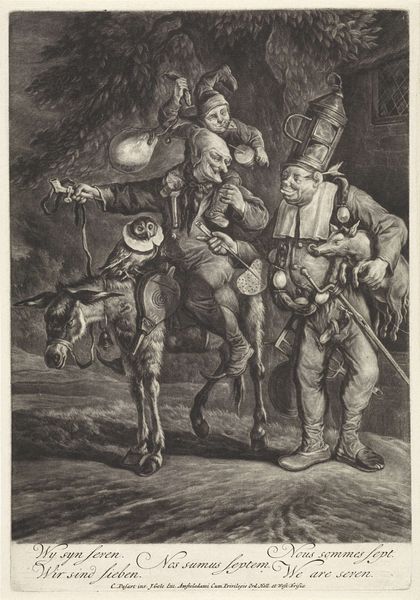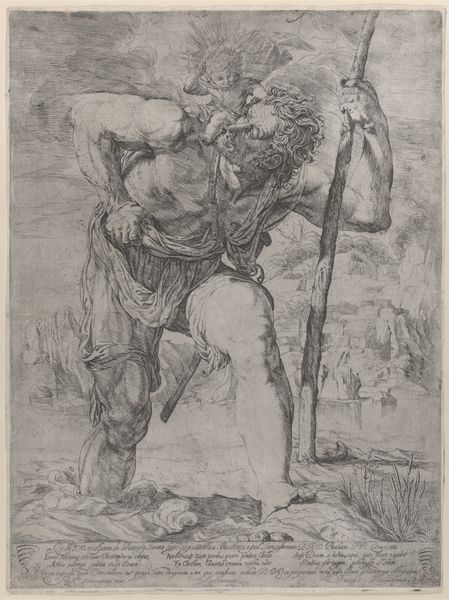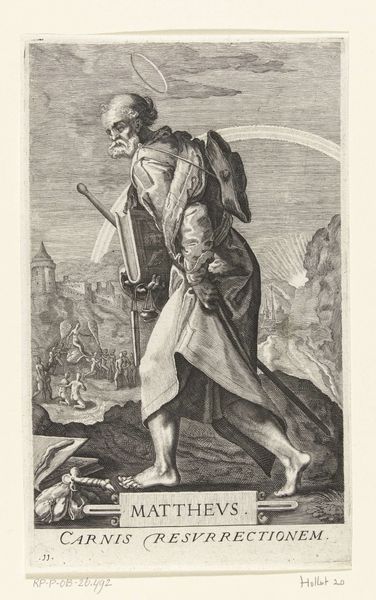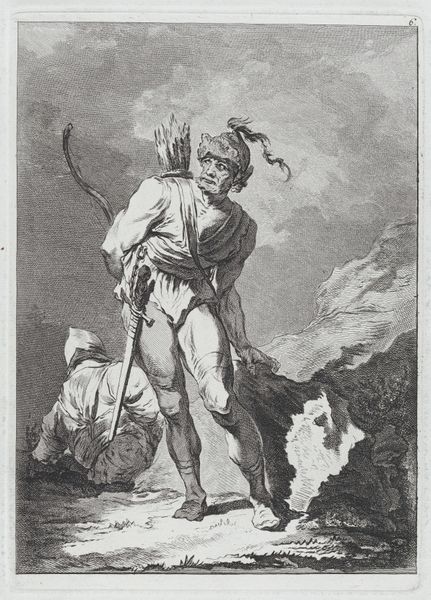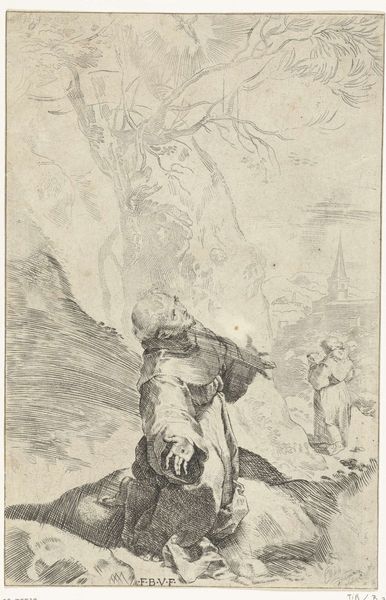
drawing, ink, engraving
#
portrait
#
drawing
#
baroque
#
charcoal drawing
#
charcoal art
#
ink
#
genre-painting
#
charcoal
#
engraving
Dimensions: height 248 mm, width 179 mm
Copyright: Rijks Museum: Open Domain
Cornelis Dusart created this etching titled "De Oost-Indiëvaarder" around 1695. It depicts a disheveled, pipe-smoking man in a theatrical pose, his dress alluding to someone who has traveled to the East Indies. This image is a commentary on the Dutch colonial enterprise of the 17th century. We see this figure, presumably a sailor returned from the East Indies, indulging in drink and revelry. Dusart uses visual codes to create meaning: the exotic fabrics and the pipe signal the man's connection to the East, while his disheveled state and drunken demeanor suggest the moral corruption that could result from such ventures. The Dutch East India Company was a powerful economic force at this time, and the realities of colonial trade could be brutal. Dusart's etching invites us to consider the human cost of empire. To fully understand this work, we might consult historical records of the Dutch East India Company, as well as period literature that grappled with the moral implications of colonialism. This image offers a glimpse into the social and cultural anxieties surrounding Dutch expansion in the East.
Comments
No comments
Be the first to comment and join the conversation on the ultimate creative platform.
